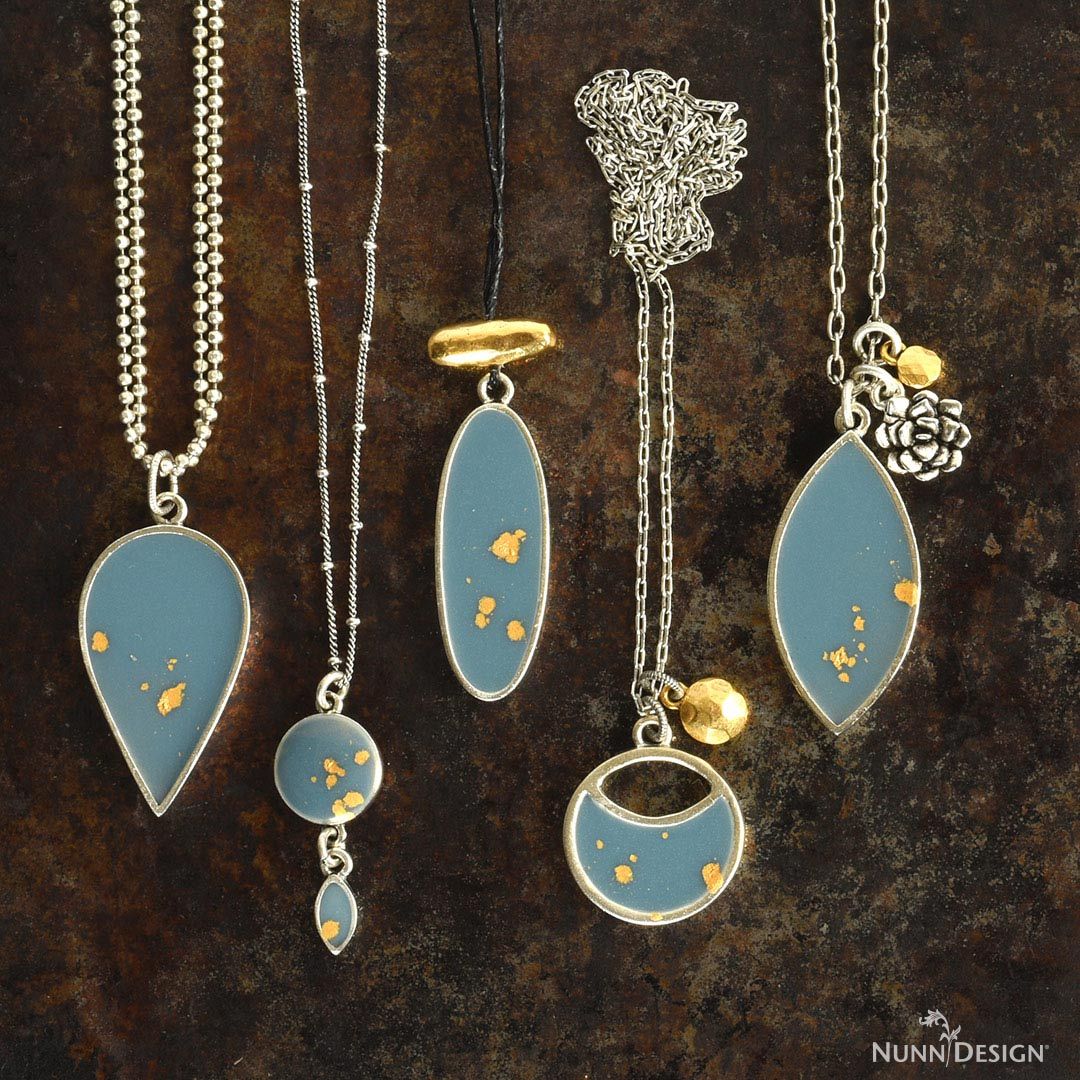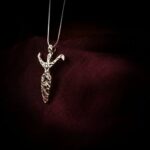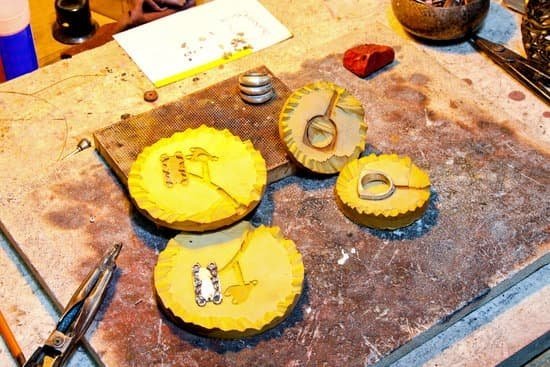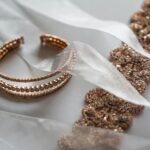Diamonds have long held a prominent place in the realm of jewelry-making, captivating and enchanting individuals around the world with their unparalleled beauty and brilliance. In this article, we delve into the art of making jewelry with diamonds – from their symbolic significance to the tools and techniques employed in crafting these exquisite pieces.
Diamond jewelry has always possessed a certain allure that sets it apart from other gemstones. It is often seen as a status symbol, representing wealth, luxury, and elegance. Beyond their monetary value, diamonds also hold deep symbolic meaning for many cultures and societies.
These precious stones are said to symbolize eternal love, strength, purity, and invincibility. Whether worn as an engagement ring or gifted as a token of affection, diamond jewelry carries with it an emotional resonance that few other gems can match.
The history of diamond jewelry-making spans centuries and encompasses cultures across the globe. From ancient civilizations adorning themselves with rough-cut diamonds to modern jewelers using innovative techniques to create intricate designs, the craftsmanship involved in making diamond jewelry has evolved with time. Today, artisans continue to be inspired by this timeless gemstone, incorporating diamonds into stunning creations that capture both tradition and contemporary style.
Join us as we embark on a journey through the captivating world of making jewelry with diamonds. We will explore the intricacies of diamond selection based on the 4 Cs – carat, cut, clarity, and color – delving into how these factors impact both quality and design. Dive into our guides on essential tools and materials for working with diamonds safely, as well as various techniques used in diamond jewelry-making.
Unleash your creativity and let your imagination soar as you discover design inspirations that combine the brilliance of diamonds with unique styles tailored to your preferences. Learn best practices for caring for your diamond jewelry so that it continues to dazzle for years to come. And finally, equip yourself with insider tips on smart shopping decisions when investing in these precious gemstones.
The allure of diamond jewelry is undeniable, and with a little knowledge and the right tools, you too can embark on the rewarding journey of creating your own exquisite pieces. So, let’s dive in and explore the fascinating world of making jewelry with diamonds that will inspire, captivate, and endure for generations to come.
Understanding Diamonds
When it comes to diamond jewelry, understanding the four Cs is essential. The four Cs refer to carat weight, cut, clarity, and color, and they have a significant impact on the overall quality and value of a diamond. In this section, we will delve into each of these elements and explore how they affect the design and appearance of diamond jewelry.
Carat Weight
Carat weight is perhaps the most well-known of the four Cs. It refers to the size or mass of a diamond and is measured in carats. Larger diamonds are generally considered more valuable, but it is important to note that carat weight does not necessarily determine a diamond’s beauty or brilliance. Factors such as cut and clarity also play a vital role in determining its overall appeal.
Cut
The cut of a diamond has a profound influence on its sparkle and fire. While many people may assume that “cut” refers to the shape of a diamond (such as round or princess), it actually refers to how well the facets of the stone interact with light.
A well-cut diamond will reflect light internally and externally, creating an exquisite display of brilliance. The cut grade ranges from Excellent to Poor, with Excellent being the most desirable for achieving maximum brilliance.
Clarity
Clarity assesses any internal or external flaws within a diamond called inclusions and blemishes respectively. These imperfections may be naturally occurring during the formation process or result from cutting and polishing. The clarity grade ranges from Flawless (no visible imperfections under 10x magnification) to Included (obvious flaws visible to the naked eye). Ultimately, selecting a clarity grade depends on personal preference and budget.
Color
Contrary to popular belief, colorless diamonds are considered rarer and more valuable. The Gemological Institute of America (GIA) grades diamonds on a scale from D (colorless) to Z (light yellow or brown). Color differences may be subtle, but they can significantly impact a diamond’s value and appearance. Depending on personal taste, some individuals prefer warm, slightly colored diamonds, while others seek the classic brilliance of a colorless stone.
Understanding the four Cs allows consumers to make informed decisions when selecting diamonds for jewelry making. By considering carat weight, cut, clarity, and color, one can create pieces that highlight the unique qualities of each diamond. Whether designing an engagement ring or a pendant, mastering the intricacies of the four Cs will enable jewelry makers to craft exquisite pieces that are as beautiful as they are valuable.
Tools and Materials Required for Jewelry Making with Diamonds
When it comes to creating stunning jewelry pieces with diamonds, having the right tools and materials is essential. Whether you are a beginner or an experienced jeweler, here is a list of what you will need:
Essential Tools
– Jewelers’ saw: Used for cutting metal and creating intricate designs.
– Pliers: Different types of pliers are needed for bending, twisting, and holding jewelry components.
– Files and sandpaper: Used for smoothing edges and refining shapes.
– Soldering tools: Including a torch, flux, and solder for joining metal parts together.
– Loupes or magnifying glasses: Necessary for inspecting the diamonds closely.
Recommended Materials
– Metals: Common choices include gold, silver, platinum, or white gold for setting the diamonds.
– Settings: Prong settings, bezel settings, or pave settings are popular options for showcasing diamonds.
– Findings: These include jump rings, clasps, ear wires, and chain links to assemble the jewelry piece securely.
– Diamond testing tools: Essential for verifying the authenticity of diamonds before use.
While working with diamonds can be an exciting endeavor, it is important to prioritize safety. Here are a few precautions to keep in mind when handling both diamonds and the necessary tools:
- Protective eyewear should be worn at all times when using tools that may cause fragments to fly.
- Use caution when handling sharp objects such as saw blades or files to avoid accidents.
- Store loose diamonds in secure containers to avoid loss or damage.
- Ensure proper ventilation in your workspace when using soldering tools as they produce fumes that can be harmful if inhaled.
With these essentials at hand and appropriate safety measures in place, you can embark on your journey of jewelry making with diamonds. Remember that practice makes perfect, and as you gain experience, you can explore new techniques and materials to further enhance your diamond jewelry designs.
Diamond Jewelry-Making Techniques
Diamond jewelry-making techniques require precision and skill to create stunning and professional pieces. There are several techniques commonly used in diamond jewelry-making, including prong setting, pave setting, and bezel setting.
Prong setting is one of the most popular techniques for securing diamonds in jewelry. It involves using small metal prongs or claws to hold the diamond in place. This technique allows the maximum amount of light to enter the diamond, enhancing its brilliance. It is commonly used in engagement rings, where the diamond is the centerpiece.
Pave setting involves placing multiple small diamonds closely together on a piece of jewelry. The diamonds are held in place by small beads or prongs that create an illusion of a paved surface. This technique adds sparkle and creates a luxurious look. Pave settings are often used in earrings, bracelets, and pendants to add extra glamour.
Bezel setting involves creating a metal border (bezel) around the diamond to hold it securely in place. This technique provides excellent protection for the diamond as it is fully encased within the metal. Bezel settings can be simple or elaborate, depending on the desired style of the jewelry piece.
Mastering these diamond-specific techniques requires patience and practice. It’s important to pay attention to detail during each step of the process to ensure a professional result. Working with diamonds also requires specialized tools such as tweezers, pliers, and magnifiers to handle them safely and with care.
By learning and mastering various diamond jewelry-making techniques, artisans can create unique and exquisite pieces that showcase the beauty of these precious gems. Whether crafting an engagement ring or a pendant necklace, understanding different techniques opens up endless possibilities for creativity in design.
Design Inspirations
When it comes to designing diamond jewelry, the possibilities are truly endless. Diamonds have long been revered for their beauty and brilliance, making them a perfect choice for creating stunning pieces of jewelry. Whether you’re looking for inspiration for your next jewelry-making project or simply appreciate the artistry of diamond jewelry, this section will showcase a variety of design ideas that will leave you in awe.
Exploring Different Diamond Jewelry Styles
One of the most fascinating aspects of diamond jewelry is the wide range of styles available. From vintage-inspired designs to contemporary creations, there is something to suit every taste and preference. Vintage-style diamond jewelry often features intricate detailing, filigree work, and unique settings that add an air of nostalgia and charm. On the other hand, contemporary designs tend to focus on sleek lines, minimalism, and innovative techniques that highlight the natural beauty of diamonds.
Custom designs offer a way to create truly one-of-a-kind pieces that reflect your personal style and story. With custom-made diamond jewelry, you have the opportunity to collaborate with designers and artisans who can bring your vision to life. Personalized touches such as engravings, birthstones, or incorporating sentimental elements like heirloom diamonds can make your piece even more special.
Tips for Incorporating Diamonds into Unique Jewelry Pieces
If you’re looking to craft your own diamond jewelry or work with a designer on a custom piece, here are some tips for incorporating diamonds into unique jewelry pieces:
- Mixed Metals: Consider combining different metals such as rose gold, yellow gold, or white gold/platinum to create contrast and enhance the beauty of diamonds.
- Geometric Shapes: Experiment with geometric shapes such as triangles or hexagons when designing earrings or pendants. These shapes can lend a modern touch while allowing the diamonds to take center stage.
- Statement Rings: Instead of the traditional solitaire ring, explore bold and imaginative designs that use multiple diamonds or intricate settings. Unique arrangements like clusters, halo designs, or asymmetrical settings can make a striking statement.
- Incorporating Colored Gemstones: Add a pop of color to your diamond jewelry by pairing it with vibrant gemstones such as sapphires, emeralds, or rubies. This juxtaposition can create an eye-catching contrast and elevate the overall design.
Embracing Your Creativity
Designing diamond jewelry is not only about following existing trends but also about expressing your own creativity. Don’t be afraid to think outside the box and incorporate unconventional elements into your designs. Experiment with different textures, sizes, and shapes of diamonds to create depth and visual interest. Let your imagination soar and allow the beauty of diamonds to inspire you on your creative journey.
Remember that diamond jewelry making is an art form that takes time to master. Be patient with yourself as you explore various techniques and design ideas. Most importantly, have fun with the process. Creating stunning diamond jewelry is a testament to your creativity and passion for craftsmanship.
Diamond Care and Maintenance
When it comes to diamond jewelry, proper care and maintenance are essential to ensure its lasting beauty and brilliance. Diamonds are known for their durability, but they can still be vulnerable to damage if not handled and cared for correctly. In this section, we will discuss the best practices for caring and cleaning diamond jewelry, how to protect diamonds from damage or loss, as well as expert advice on prolonging the brilliance of your precious stones.
To care for your diamond jewelry, it is recommended to keep it away from harsh chemicals such as bleach or chlorine, as they can cause damage to both the metal setting and the diamond itself. It is also important to remove your jewelry before engaging in activities that may expose it to scratching or impact, such as sports or household chores.
When not wearing your diamond jewelry, store it in a soft cloth pouch or a separate compartment in your jewelry box to prevent scratches caused by contact with other gemstones or metals.
Cleaning your diamond jewelry regularly is also crucial in maintaining its sparkle and brilliance. You can clean diamonds at home by soaking them in a mixture of warm water and mild dish soap. Gently scrub the diamonds with a soft toothbrush or a dedicated jewelry brush to remove dirt and oils.
Rinse the jewelry under running water and pat dry with a lint-free cloth. It is important not to use harsh chemicals or abrasive cleaners on your diamond jewelry, as they can cause damage.
In order to protect your diamonds from damage or loss, it is advisable to have them insured separately as part of your homeowner’s policy or through specialized jewelers’ insurance. Additionally, it is recommended that you have your diamond pieces checked annually by a professional jeweler who can inspect the setting for any signs of wear or loose prongs that may put your diamonds at risk.
By following these care and maintenance guidelines, you will be able to enjoy the beauty of your diamond jewelry for years to come while ensuring its longevity and value. Remember, diamonds are forever, but they still require love and attention to maintain their brilliance and sparkle.
Shopping for Diamond Jewelry
When it comes to shopping for diamond jewelry, there are several key considerations that buyers should keep in mind. From setting a budget to ensuring the authenticity of the diamonds, taking the time to educate oneself can help make an informed and satisfying purchase. This section will provide valuable information on what to know before purchasing diamond jewelry.
One of the most crucial factors when shopping for diamond jewelry is setting a budget. Diamonds come in various sizes, cuts, clarities, and colors, which all influence their price. To avoid overspending or being overwhelmed by choices, it is essential to determine a realistic budget beforehand. Additionally, buyers should consider whether they want a natural diamond or a lab-grown one. Lab-grown diamonds are not only more affordable but also more sustainable options.
To guarantee the quality and authenticity of diamond jewelry, buyers should always look for certifications from reputable gemological laboratories. Certifications from labs such as GIA (Gemological Institute of America) or AGS (American Gem Society) ensure that the diamonds have been examined and assessed according to industry standards. These certifications provide important information about the specific characteristics of the diamond, including its cut grade, color grade, clarity grade, and carat weight.
It is also important for buyers to understand the different types of diamond jewelry available before making a purchase. Whether it’s earrings, bracelets, necklaces, or engagement rings, each piece offers its own unique appeal. By considering personal style preferences and intended occasions for wearing the jewelry, buyers can make choices that suit their needs and desires.
In conclusion,
when shopping for diamond jewelry,
it is crucial to set a budget,
verify the authenticity with certifications,
and carefully choose the type of jewelry
that best fits personal style and occasion.
With these considerations in mind,
shoppers can make confident purchases
and enjoy their stunning diamond pieces
for years to come.
| Considerations | Tips |
|---|---|
| Set a budget | Determine a realistic budget before starting the shopping process. |
| Verify authenticity | Look for certifications from reputable gemological laboratories like GIA or AGS. |
| Choose the right type of jewelry | Consider personal style and intended occasions when selecting diamond jewelry. |
The Symbolic and Emotional Value of Diamond Jewelry
Diamond jewelry holds immense symbolic and emotional value for both the wearer and the giver. These precious gemstones signify love, commitment, and celebration in a way that no other stone can. For centuries, diamonds have been cherished and revered for their exceptional beauty and lasting durability. This section will delve into the sentimental and symbolic meaning behind diamond jewelry, exploring how it holds a special place in our hearts and society.
Diamonds have long been associated with love and romance, making them the ultimate symbol of devotion. When someone presents a diamond ring to their partner, it is an expression of deep affection and a commitment to a lifelong partnership. The sparkle of a diamond represents the brightness of love, capturing the essence of an eternal connection.
Aside from romantic relationships, diamond jewelry also signifies important milestones and celebrations. From anniversaries to birthdays and graduations to promotions, diamonds are often gifted as tokens of achievement, success or memorable moments in one’s life. The joy that comes with receiving diamond jewelry as a gift is unparalleled because it serves as a reminder of those cherished moments for years to come.
In addition to their romantic connotations, diamonds also hold significant cultural value in many societies. In various cultures around the world, diamonds are believed to bring good fortune, protection against evil or enhance one’s spiritual well-being. They are considered symbols of strength, power, purity, and wealth. The deep-rooted symbolism associated with diamonds adds an extra layer of significance when choosing or wearing such precious pieces.
These stories about the sentimental value of diamond jewelry are not limited to historical tales; they continue today through personal experiences shared by countless individuals. Many people inherit heirloom diamond pieces handed down through generations – each one carrying family history as well as emotional connections. These gemstones become treasured keepsakes that hold memories close to our hearts.
Conclusion
In conclusion, making jewelry with diamonds is a truly captivating and fulfilling artistic endeavor. The allure of diamond jewelry is undeniable, as it has been a popular choice among consumers for centuries. Not only do diamonds symbolize wealth and luxury, but they also hold significant meaning in various cultures across the world. With a rich history of diamond jewelry-making, this craft has evolved into a blend of tradition and innovation.
Understanding the 4 Cs – carat, cut, clarity, and color – is crucial for selecting the perfect diamond for your jewelry creations. Each of these factors impacts the quality and value of the diamond, ultimately influencing the overall design of your piece. By mastering diamond-specific techniques such as prong setting or pave setting, you can bring out the true brilliance and beauty of these precious gems.
When it comes to design inspirations, the possibilities are endless. From vintage styles to contemporary designs to custom creations, incorporating diamonds into your jewelry pieces allows you to express your unique style and personality. It is important to care for and maintain diamond jewelry to ensure its longevity and radiance. By following best practices for cleaning and protecting diamonds, you can enjoy their brilliance for years to come.
As we come to the end of this article, I encourage you to explore your creativity in making jewelry with diamonds. Whether you are an experienced jewelry-maker or just starting out, there is immense satisfaction in crafting a piece that reflects your own personal style. I invite you to share your own diamond jewelry-making experiences or images with us. Let’s continue to celebrate the beauty and versatility of diamond jewelry together.

Welcome to my jewelry blog! My name is Sarah and I am the owner of this blog.
I love making jewelry and sharing my creations with others.
So whether you’re someone who loves wearing jewelry yourself or simply enjoys learning about it, be sure to check out my blog for insightful posts on everything related to this exciting topic!





